Manaka Hamono Tanrenjo
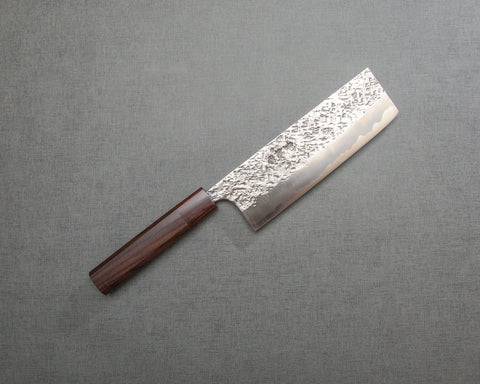
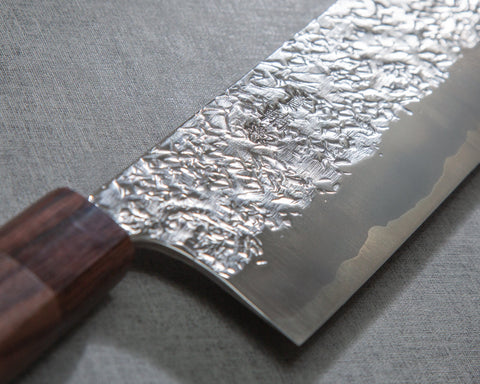
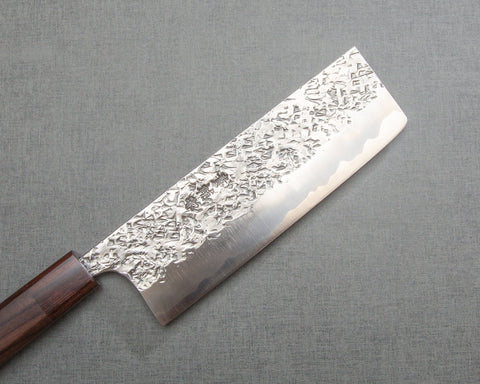
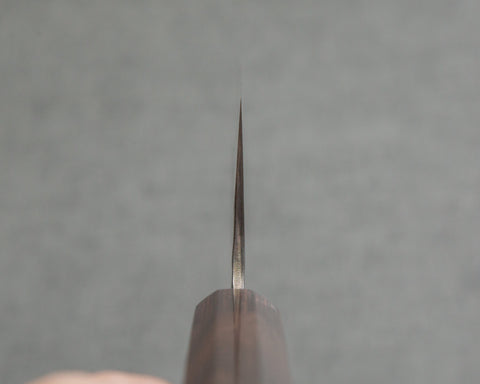
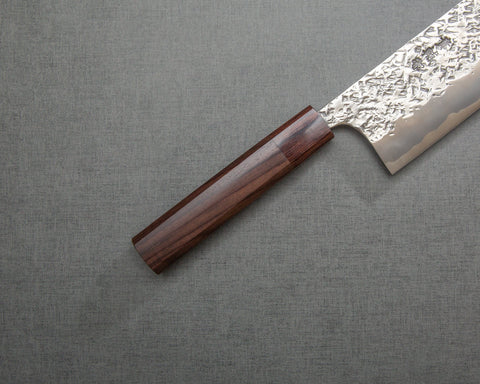
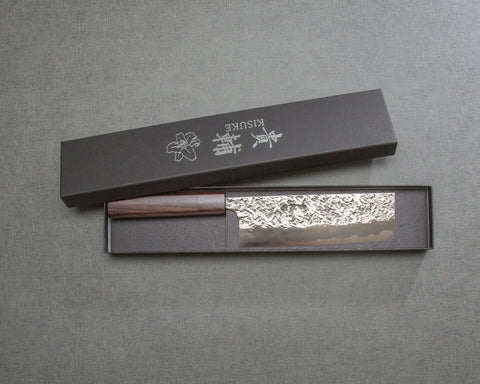
Kisuke ATS-34 Warikomi Tsuchime 165mm Nakiri with Rosewood Handle
Pickup currently unavailable
This handcrafted Nakiri is made of ATS-34 steel, a type of Japanese stainless steel that's high in carbon and chromium content for great corrosion and wear resistance. Clad with stainless steel using Warikomi construction, the blade is heat-treated to 64 HRC, allowing incredible edge retention. The blade is not exceptionally thin, but the perfect grind geometry and distal tapering ensure a sleek cutting performance.
Spec:
- Origin (Made in): Kasukabe, Saitama Prefecture, Japan
- Brand: Manaka Hamono
- Craftsman: Kisuke Manaka
- Knife Type: Nakiri
- Blade
- Construction: Warikomi
- Grind: Double-edged Blade (50/50 Grind)
- Hagane (Core Steel): ATS-34
- Jigane (Cladding): 18Cr Stainless Steel
- Hardness: 64 HRC
- Hand-forged, hand-grind, hand-sharpened
- Blade Finishes: Tsuchime (Hammered)
- Blade Length: 165mm (6.5")
- Blade Height (at heel): 55mm
- Spine Thickness
- Above heel: 3.0mm
- Middle: 2.0mm
- Handle
- Shape: Hachikaku (Octagonal)
- Material: Rosewood
- Kuchiwa: Brown Pakkawood
- Length: 127mm
- Overall Length: 312mm
- Weight: 183g (6.46oz)
- Engraved Mark: In Japanese Kanji "Kisuke" (貴輔)
About Kisuke 貴輔 / Manaka Hamono 間中刃物鍛錬所
Kisuke Manaka is the 5th generation blacksmith at Manaka Hamono, a workshop founded in 1872 in Kasukabe, Saitama Prefecture of Japan. Kisuke Manaka did not inherit the workshop from his own family, instead he was married into the Manaka family, and eventually became a full-time, professional blacksmith. Since his father-in-law (the 4th generation Manaka) was more a retailer, he was not capable of teaching Kisuke Manaka any blacksmithing skills. Luckily, Kisuke Manaka’s grand-father-in-law (the 3rd generation Manaka) had left a lot of tools and equipment, as well as books and notes on blacksmithing, he was able to teach himself during the process, and had master Tsukasa Hinoura as his mentor.
Care:
Wash and dry with a soft sponge, and safely store after use. Avoid cutting into bones, frozen foods, hard fruit pits.
Cutting Surface:
Recommended cutting surface: wood, rubberized boards and high-end composites, and quality plastics such as polyethene make acceptable cutting surfaces, and will help protect and prolong knife’s edge. AVOID glass, metal, countertops, and other rigid, non-forgiving surfaces.
Sharpening:
We recommend sharpening all quality Japanese knives on whetstones, as we believe they yield the best results for your knives.
After going trough a number og nakiris in my time, I finaly found perfection. This knife is super sharp, feels good in my hand, the blade is vide/high enough for good knuckle clearance, and I have quite large hands, so that’s a real treat. Last but not least - it is unbelievebly beautiful!!! The pictures do not do it justice - this is an amazing knife!
Free Shipping
Free Shipping on most orders.
30 Days Return
Return unused within 30 days for a full refund, no questions asked (terms apply).
Top Japanese Makers
All knives made in Japan by top Japanese knife makers.
About
Burrfection Store sources professionally designed sharpening products, and knives from top Japanese craftsmen.
